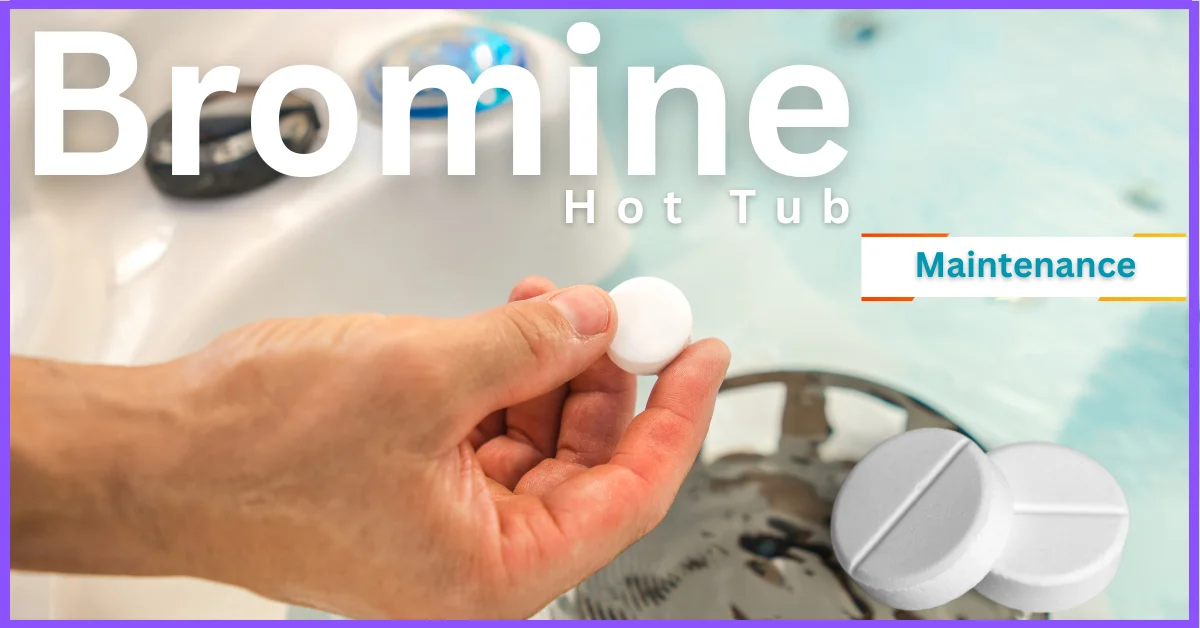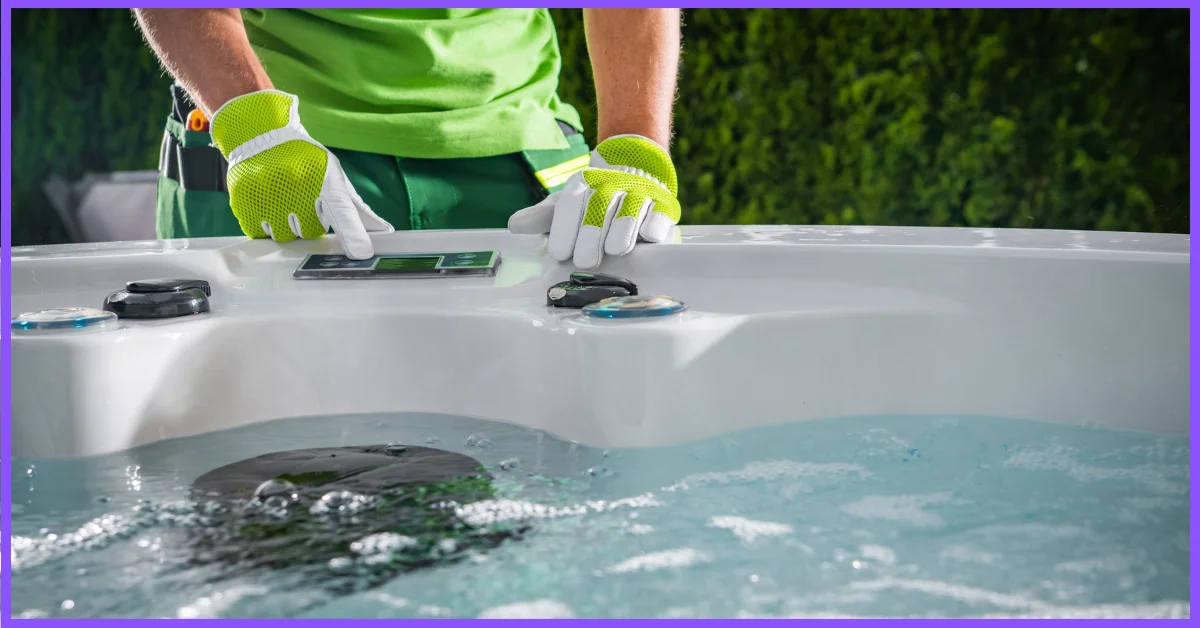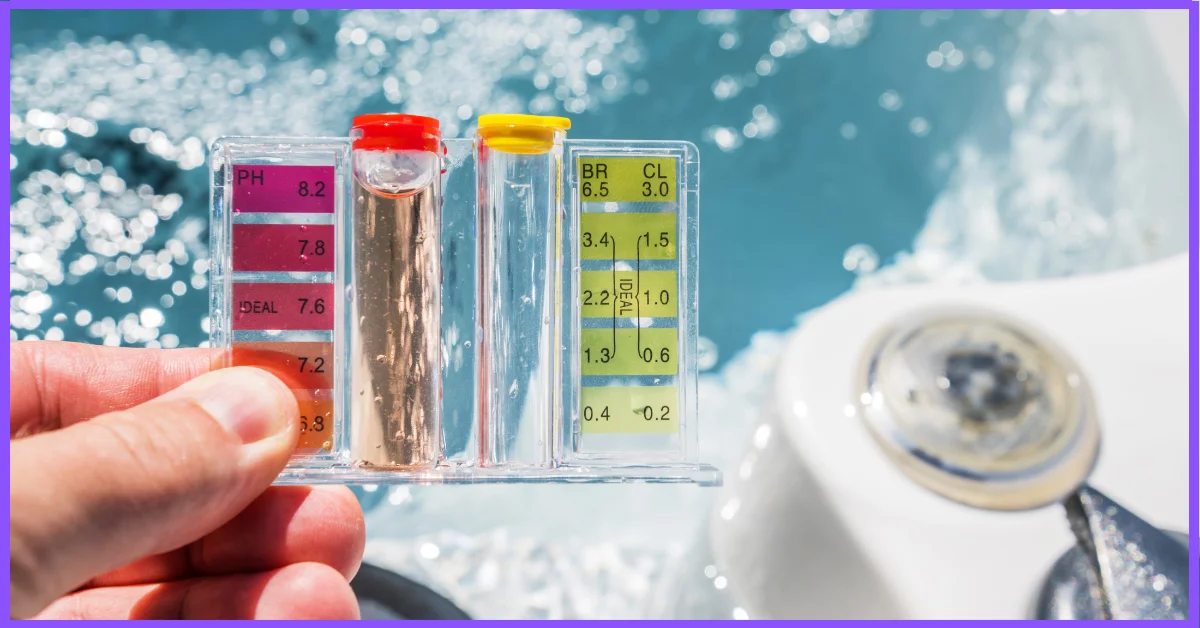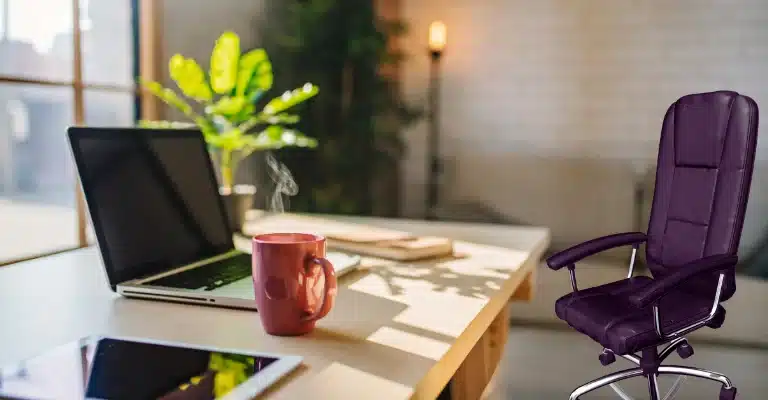5 Secrets to Bromine Hot Tub Maintenance
Bromine keeps your hot tub water clear and safe without the harsh sting of chlorine, perfect if dry skin or strong smells bother you. It holds up in 100°F+ heat, cutting down on constant tweaks. Follow these steps to skip cloudy water, rashes, or pump failures that hit thousands yearly.
One diarrheal mishap in the tub can dump millions of germs into the water, per CDC data. Proper bromine levels kill them fast, slashing outbreak risks by over 90% in well-maintained spas. Users switching from chlorine report 70% less itch after a month, based on Reddit and forum threads from families with kids.
This guide covers everything you need to know about using and maintaining bromine in your hot tub, including setup, testing, troubleshooting, and tips for sensitive skin.
- Why Bromine Beats Chlorine for Your Soak
- Why Choose Bromine?
- 5 Secrets to Nail Bromine Levels Without the Hassle
- Quick 7-Step Bromine Setup and Routine
- Details Step-by-Step Bromine Maintenance
- Quick Way to Bromine Hot Tub Maintenance:
- How to Shock a Bromine Hot Tub
- How I Set Up and Maintain My Bromine Hot Tub
- Maintain the Bromine Level with a Dispenser or Feeder
- Minimum Bromine Concentrations for Pools and Spas
- FAQs
Why Bromine Beats Chlorine for Your Soak
Bromine sanitizes steadily, even after heavy use. It forms a “bromine bank” that reactivates with shocks, so you dose less often, saving 20-30% on chemicals over chlorine, per pool pros.
- Skin-Friendly: Triggers rashes in just 15% of users vs. chlorine’s 40%, from allergy forums like PoolSpaForum. A Texas family ditched chlorine after weekly hives; bromine cleared it in two weeks.
- Heat-Proof: Stays potent up to 104°F chlorine drops 50% faster in hot water.
- Low Odor: No eye-watering fumes; 80% of hot tub owners prefer it for indoor setups.
- Longer Life: Regenerates itself, extending water freshness by 1-2 months per fill.
Real talk: In a 2024 Bullfrog Spas survey, 65% of owners with sensitive skin stuck with bromine after trying both, no regrets.
Sensitive Skin Setup: Your Gentle Guide
Lower to 2-3 ppm + minerals = 80% less dryness, from allergy group shares. Rinse post-soak, moisturize. Avoid chlorine crossovers, full drain first.
Example: Eczema sufferer in Ohio switched; “First rash-free winter in years.”
Safety Essentials:Gloves on, store dry/cool. No chlorine mixes, gases risk ER trips (4,500 chemical injuries yearly, CDC). Test strips sealed.
Why Choose Bromine?
- Gentler on Skin: Less likely to cause dryness, rashes, or irritation compared to chlorine.
- Heat-Stable: Effective in hot water (up to 104°F), unlike chlorine, which dissipates faster.
- Odor-Free: Minimal chemical smell, improving the soaking experience.
- Long-Lasting: Creates a “bromine bank” that regenerates with oxidizers, reducing frequent dosing.

5 Secrets to Nail Bromine Levels Without the Hassle
You’ve got the basics; these tweaks keep things effortless and irritation-free.
Secret 1: Test Like Clockwork Dip strips (AquaChek) weekly, or daily post-party. Aim 3-5 ppm. A digital LaMotte ColorQ spots drifts early, preventing the cloudy mess that idles 25% of tubs yearly.
Secret 2: Dose Slow, Circulate Long Sprinkle granules with jets off, then run 15-30 minutes. Overdosing spikes to 10 ppm, irritating eyes like one Florida user who learned the hard way—red lids for days.
Secret 3: Shock Weekly, Not Less Hit with 1-2 oz MPS/500 gal to zap bacteria. Skip it, and bromamines build—causing that fishy smell and itch in 40% of neglected tubs, per EPA logs.
Secret 4: Filter Flush Ritual Hose monthly; deep-clean quarterly with Leisure Time. Clogged ones spike pressure 20%, wearing pumps out in under a year. One Idaho spa tech saved clients $500 in repairs this way. Check how to clean a hot tub filter full guide.
Secret 5: Drain on Schedule Every 3-6 months, based on bather load. High-use tubs hit TDS limits faster, breeding algae. A California couple’s quarterly reset ended their foam woes, water stayed blue for months. Check How to Drain Your Hot Tub Fast full guide.
Bonus: Enzymes weekly drop bromine needs 30%, per user tests on HottubOwners Facebook group.
Quick 7-Step Bromine Setup and Routine
Drain every 3-4 months to dodge biofilm buildup, which causes 30% of hot tub infections. Here’s your no-fuss plan for crystal-clear water.
1. Drain and Clean
Empty the tub every 3 to 4 months. Use a spa cleaner like Ahh-Some to scrub away buildup, then rinse everything well.
2. Refill with Fresh Water
Fill the tub using a hose with a pre-filter. Check your calcium hardness and aim for 150 to 250 ppm to protect your equipment.
3. Build Your Bromine Bank
Add sodium bromide following the label instructions. Activate it with a non-chlorine shock to create active bromine.
4. Maintain Bromine Levels
Drop bromine tablets in a floater or feeder for steady release. Use granules if you need a quick boost. Keep levels between 3 and 5 ppm.
5. Balance Water Chemistry
Test water two or three times a week. Keep pH at 7.2 to 7.8 and alkalinity at 80 to 120 ppm.
6. Do Weekly Maintenance
Shock the water once a week, rinse or clean your filters, and wipe down the shell. Replace water quarterly for best results.
7. Sensitive Skin Tip
If you’re prone to dryness or irritation, lower bromine to 2–3 ppm and add enzyme treatments for gentler water care.
Pro move: Automate with a FROG @ease cartridge. One Minnesota owner logged zero refills for 4 months straight.
| Parameter | Ideal Range | Quick Fix If Low | Quick Fix If High |
|---|---|---|---|
| Bromine | 3-5 ppm | Add 1 tsp granules/200 gal | Dilute 10-20% fresh water |
| pH | 7.2-7.8 | 1 oz sodium carbonate/500 gal | 1 oz bisulfate/500 gal |
| Alkalinity | 80-120 ppm | Sodium bicarbonate dose | Gradual pH decreaser |
| Calcium Hardness | 150-250 ppm | Calcium chloride boost | Soft water dilution |
CDC backs 4 ppm minimum for spas, test daily in heavy use to hit it.
Details Step-by-Step Bromine Maintenance
1. Initial Setup
- Drain and Clean the Hot Tub:
- Drain the hot tub completely every 3-4 months (or per manufacturer guidelines).
- Use a natural cleaner like Ahh-Some Hot Tub/Jetted Tub Cleaner to remove biofilm, oils, and residue.
- Rinse thoroughly to avoid chemical interactions with bromine.
- Fill with Fresh Water:
- Use a garden hose with a pre-filter (Camco Hose Filter) to remove metals and impurities.
- Check water hardness (ideal: 150-250 ppm calcium hardness) to prevent scaling or corrosion.
- Establish a Bromine Bank:
- Add sodium bromide (Spa Choice Sodium Bromide) to create a reserve (15-20 ppm is typical—follow product instructions, usually 1-2 oz per 500 gallons).
- Activate with an oxidizer like non-chlorine shock (MPS, potassium peroxymonosulfate, SpaGuard Enhanced Shock) to convert sodium bromide into active bromine (hypobromous acid).
- Use 1-2 oz of MPS per 500 gallons to start; wait 15-30 minutes before testing.
2. Choosing a Bromine Delivery System
Bromine can be added via tablets, granules, or automated systems. Each has pros and cons:
As an Amazon Associate, we earn from qualifying purchases. This post may contain affiliate links, which means we may receive a small commission at no additional cost to you.
| Method | Description | Pros | Cons | Example Products |
|---|---|---|---|---|
| Bromine Tablets | Slow-dissolving tablets in a floating dispenser or built-in cartridge. | Easy to use; consistent dosing; ideal for low-maintenance setups. | Slower to adjust levels; dispenser maintenance needed. | Clorox Spa Brominating Tablets; Leisure Time Brom Tabs. |
| Bromine Granules | Powder dissolved directly into water. | Fast-acting; precise control; good for quick boosts. | Requires frequent manual dosing; can overshoot levels. | SpaGuard Brominating Concentrate. |
| Automatic Systems | Cartridges or built-in brominators (in Hot Spring or Jacuzzi spas). | Minimal effort; steady bromine levels; spa-specific. | Higher upfront cost; cartridge replacements (monthly). | FROG @ease SmartChlor+Bromine; Spa Frog Mineral System. |
- Recommendation: For beginners, start with a floating dispenser and tablets for simplicity. Advanced users or those with sensitive skin may prefer a mineral+bromine hybrid system (FROG @ease) to reduce bromine use by up to 50%.
As an Amazon Associate, we earn from qualifying purchases. This post may contain affiliate links, which means we may receive a small commission at no additional cost to you.
3. Balancing Water Chemistry
Bromine works best when water parameters are balanced. Test daily during initial setup and 2-3 times weekly thereafter using test strips (AquaChek Bromine Test Strips) or a digital tester.
As an Amazon Associate, we earn from qualifying purchases. This post may contain affiliate links, which means we may receive a small commission at no additional cost to you.
| Parameter | Ideal Range | How to Adjust |
|---|---|---|
| Bromine Level | 3-5 ppm (parts per million) | Increase: Add bromine granules (1 tsp per 200 gallons raises ~2 ppm) or adjust dispenser. Decrease: Dilute with fresh water or wait (bromine naturally decays). |
| pH | 7.2-7.8 | Increase: Add sodium carbonate (SpaGuard pH Increaser, 1 oz per 500 gallons). Decrease: Add sodium bisulfate (SpaGuard pH Decreaser, 1 oz per 500 gallons). |
| Total Alkalinity (TA) | 80-120 ppm | Increase: Add sodium bicarbonate (SpaGuard Total Alkalinity Increaser). Decrease: Add pH decreaser gradually. |
| Calcium Hardness | 150-250 ppm | Increase: Add calcium chloride (SpaGuard Calcium Hardness Increaser). Decrease: Dilute with soft water. |
Pro Tip: Adjust TA first, then pH, as TA stabilizes pH. Low pH (<7.2) can irritate skin and corrode equipment; high pH (>7.8) reduces bromine’s effectiveness.
4. Regular Maintenance Routine
- Daily/After Use:
- Shock with non-chlorine MPS (1 oz per 500 gallons) after heavy use or if water looks cloudy to regenerate the bromine bank.
- Check bromine levels (3-5 ppm) and adjust with granules if needed.
- Weekly:
- Test and balance pH, TA, and bromine.
- Clean the filter with a hose or filter cleaner (Leisure Time Filter Clean) to remove oils and debris.
- Add a clarifier (SpaGuard Polysheen Blue, 1 oz per 500 gallons) if water is hazy.
- Monthly:
- Inspect and replace bromine cartridges or tablets in dispensers.
- Check for scale buildup; use a stain/scale preventer (SpaGuard Stain and Scale Control) if hardness is high.
- Quarterly:
- Drain, clean, and refill the hot tub to reset chemical buildup.
- Deep-clean filters or replace them (every 12-18 months).
As an Amazon Associate, we earn from qualifying purchases. This post may contain affiliate links, which means we may receive a small commission at no additional cost to you.
As an Amazon Associate, we earn from qualifying purchases. This post may contain affiliate links, which means we may receive a small commission at no additional cost to you.
5. Sensitive Skin Considerations
- Lower Bromine Levels: Aim for 2-3 ppm instead of 5 ppm to minimize irritation; pair with a mineral system (Nature2 or Spa Frog) to reduce bromine needs.
- Avoid Chlorine Contamination: Don’t mix chlorine and bromine, as this can create irritants like chloramines. Stick to non-chlorine shock.
- Use Enzymes: Add enzyme-based treatments (Spa Marvel) weekly to break down oils and organics, reducing bromine demand and skin dryness.
- Post-Soak Care: Rinse off after soaking and apply a hypoallergenic moisturizer to lock in skin hydration.
6. Troubleshooting Common Issues
| Issue | Cause | Solution |
|---|---|---|
| Cloudy Water | Low bromine, high organics, or high pH. | Shock with MPS (2 oz per 500 gallons), check pH (7.2-7.8), and clean filter. |
| Skin Irritation | High bromine, low pH, or biofilm. | Lower bromine to 2-3 ppm, adjust pH, drain/clean if persistent (test for Pseudomonas). |
| Strong Odor | Bromamines (inactive bromine compounds). | Shock with MPS; ensure bromine is 3-5 ppm. |
| Foaming | Buildup of soaps, lotions, or organics. | Add defoamer (SpaGuard Anti-Foam); use enzyme cleaner; drain if severe. |
| Low Bromine | High bather load or insufficient tablets. | Add granules (1 tsp per 200 gallons) or increase dispenser output. |
7. Safety and Storage
- Store bromine tablets/granules in a cool, dry, ventilated area away from children and pets.
- Wear gloves when handling chemicals to avoid skin contact.
- Never mix bromine with chlorine or other chemicals directly, as this can release toxic gases.
- Keep test strips dry and sealed to ensure accurate readings.
Recommended Kit
- Tablets: Clorox ($20/1.5 lb)
- Shock: SpaGuard MPS ($15/1 lb)
- Strips: AquaChek ($12/50)
- Minerals: Nature2 ($40/startup)
Total starter: Under $100 for 500-gal tub.
Sample Maintenance Schedule
| Frequency | Task |
|---|---|
| Daily/After Use | Test bromine (3-5 ppm), shock with MPS, skim debris. |
| Weekly | Test pH/TA, clean filter, add clarifier/enzyme if needed. |
| Monthly | Replace bromine cartridge, check for scale, add stain preventer. |
| Quarterly | Drain, clean, refill, reestablish bromine bank. |
Pro Tips for Success
- Invest in a Good Test Kit: Digital testers (LaMotte ColorQ) are pricier but more accurate than strips for frequent users.
- Automate Where Possible: Use a brominator or floating dispenser to maintain steady levels, especially if you’re away often.
- Monitor Bather Load: Heavy use (parties) depletes bromine faster, shock and test after each session.
- Check Spa Compatibility: Some spas (Hot Spring) have built-in bromine systems, follow manufacturer guidelines.
When to Seek Professional Help
- Persistent skin rashes despite balanced chemistry (possible bacterial contamination).
- Recurring cloudy water or foam after shocking and cleaning.
- Equipment issues (heater corrosion from low pH).

Quick Way to Bromine Hot Tub Maintenance:
By following these steps, you can maintain a clean, safe, and comfortable hot tub environment using bromine.
- Patience After Adding Bromine: After adding bromine, allow the water to circulate for 15 to 30 minutes before using the hot tub to ensure even distribution and avoid irritation.
- Using Bromine Tablets: Place bromine tablets in a floating dispenser or bromine feeder, adjusting settings according to the manufacturer’s instructions for a steady bromine release, ensuring consistent sanitation.
- Avoid Mixing with Chlorine: Don’t mix bromine and chlorine directly, as they can neutralize each other. If switching between the two, thoroughly drain and clean the hot tub to prevent reactions.
- Spot Treatment with Bromine Granules: Use bromine granules for targeted sanitation or to shock the hot tub, particularly after heavy use or when the water is cloudy. Dissolve granules in water before adding them to prevent staining or damage.
- Monitoring Bromine Tablet Lifespan: Bromine tablets generally last 1 to 2 weeks, depending on factors like water temperature and usage. Regularly check bromine levels and replace tablets as needed.
- Dosage Guidelines: Aim for a bromine level of 3-5 ppm. Refer to the product label for precise dosing instructions and use a test kit to monitor levels accurately.
How to Shock a Bromine Hot Tub
Shocking oxidizes waste without killing the bank, do it after 3+ bathers or weekly.
- Test bromine (adjust to 3 ppm if low).
- Add 2 oz MPS/500 gal—broadcast evenly.
- Jets on for 2 hours; retest.
- Wait 15 minutes before soaking.
Case in point: A Colorado family shocked post-BBQ; no next-day cloudiness, unlike their chlorine days.
Delivery Systems: Pick Yours
Tablets for ease, granules for speed mix if needed.
| Method | Best For | Pros | Cons | Top Pick |
|---|---|---|---|---|
| Tablets | Low-Maintenance | Steady release; set-it-forget-it | Slow ramps | Leisure Time Brom Tabs |
| Granules | Quick Boosts | Precise hits; fast clear-up | Manual mess | SpaGuard Concentrate |
| Auto (Cartridge) | Busy Owners | Hands-off; cuts use 50% | $50/month refills | FROG @ease |
Start tablets if new, upgrades pay off for frequent users.
How I Set Up and Maintain My Bromine Hot Tub
However, It also requires special care and attention to maintain the proper levels and effectiveness in your hot tub. Here are some steps I follow to set up and keep it level:
- First, I clean my spa thoroughly before adding any bromine. This includes removing the filters, flushing the plumbing lines with a spa line flush product, draining and rinsing the spa, and refilling it with fresh water. This ensures that my spa is free of any dirt, debris, or residues that could interfere with Bromine.
- Next, I add sodium bromide to the water to create a bromide reserve. Sodium bromide is a salt that forms the base for Bromine in water. I use bromine granules or tablets to add sodium bromide to my spa. I follow the instructions on the product label to determine how much sodium bromide I need to add based on the size and volume of my spa. This step is essential because it creates a stable bromine source in the water that shock can activate.
- Then, I shock my spa with a non-chlorine shock treatment to start the bromide and turn it into Bromine. Shocking my spa is adding a hefty dose of oxidizer to the water to eliminate any organic contaminants and boost the sanitizer level. To shock my spa, I use a non-chlorine shock product such as potassium Mon persulfate or hydrogen peroxide. I follow the instructions on the product label to determine how much shock I need to add based on the size and volume of my spa. This step is essential because it converts the sodium bromide into active Bromine, which can kill germs or algae in the water.
- After shocking my spa, I test the water with test strips to measure the level. The ideal level for my spa is between 3-5 ppm (parts per million). I use a test kit or a digital tester to measure the level of my water. This step is crucial because it helps me monitor the effectiveness and adjust it if needed.
Maintain the Bromine Level with a Dispenser or Feeder
I regularly check the levels with test strips and adjust the dispenser or feeder. This step is crucial because it helps me keep a consistent and optimal bromine level in my water without manually adding more granules or tablets.
Bromine Shocking
I also shock my spa regularly with a non-chlorine shock treatment to keep the Bromine active and influential. I shake my spa at least once a week, or more often if I use my spa frequently or have a lot of bathers.
I also shock my spa after heavy use, such as after a party or a long soak. This step is essential because it helps me maintain the quality and clarity of my water by removing any organic wastes or byproducts that could reduce its effectiveness it. For more reading about brominate in hot tubs.
Balance Other Water Parameters
In addition to maintaining the bromine level, I also balance other water parameters, such as pH, alkalinity, hardness, and total dissolved solids. These parameters affect the quality and comfort of my spa water and the performance and lifespan of my spa equipment.
I test these parameters regularly with test strips or a digital tester and adjust them with appropriate chemicals if needed. This step is crucial because it helps me prevent problems such as scaling, corrosion, staining, foaming, or cloudiness that could damage my spa or affect my enjoyment.

Minimum Bromine Concentrations for Pools and Spas
Maintaining proper bromine levels is essential for effective disinfection in pools and spas. Here are the minimum bromine concentrations recommended for different types of aquatic environments:
- Aquatic Venues: 3.0 PPM (mg/L)
- Spas: 4.0 PPM (mg/L)
| Venue Type | Minimum Bromine Concentration (PPM) |
|---|---|
| Aquatic Venues | 3.0 |
| Spas | 4.0 |
Keeping these concentrations in check helps ensure that water remains clean and safe for use.
For additional information, visit Hot Tub Patio, or if you’re interested in more reading, see Hot Tub Water Care Guide.
Troubleshooting: Fix Fast
Cloudy? Shock + filter clean. Itch? pH check, low hits skin hardest. One Virginia user traced rash to 6.8 pH; bump fixed it overnight.
- Foam: Defoam + enzymes; drain if stubborn.
- Low Bromine: Upped bathers? Granules now.
- Odor: Bromamines—double shock.
If rashes persist, test for Pseudomonas, pro call.
FAQs
This blog post helps you understand how I set up and maintain my bromine hot tub. If you have any questions or comments, please feel free to leave them below. Questions? Drop, happy bubbling!

















